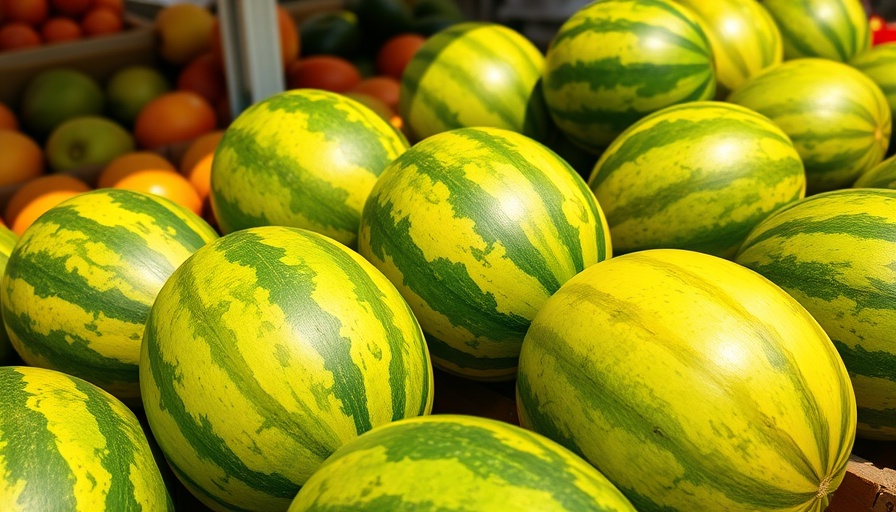
Unlocking the Secrets to Selecting the Perfect Watermelon
As summer heats up, few sensations are as refreshing as biting into a perfectly ripe watermelon. However, navigating a pile of green, hefty melons at the grocery store can leave even seasoned shoppers scratching their heads. With so many choices, how do you tell which watermelon is screaming, "pick me"?
Key Indicators of Ripeness
According to Jordan Carter, who has spent years observing watermelons at Leger and Son, a respected farm in Cordele, Georgia, there are essential clues that can guide buyers. First and foremost, keep an eye out for a creamy yellow field spot on the underside. This indicates that the watermelon ripened properly in the sun. Look for a yellowish spot that’s dull rather than bright; signs of an unripe melon typically present as green or white instead.
Equally important is the weight. A ripe watermelon should feel surprisingly hefty for its size, as these fruits are made up of about 92% water. So if you’re feeling unsure, lift another watermelon of similar size to compare weight.
The Thumping Technique—To Thump or Not to Thump?
Ah, the famous thump. Many a watermelon shopper has resorted to this method at least once. Carter notes that if you do choose to thump, listen closely for a dull, hollow sound—a sign that the watermelon is full of water and, consequently, likely to be juicy.
Other Signs to Watch For
Selecting watermelons isn’t just about the basics. Keep an eye out for additional characteristics such as webbing—those coarse brown lines that resemble a spider’s web. While it might lack scientific backing, some believe that more webbing can suggest a sweeter melon. Additionally, when lightly scratched, a ripe watermelon should show a white-green interior underneath, whereas an unripe one will leave an indentation.
Seasonal Picking
Timing also plays a critical role. Aim to purchase your watermelons in season—usually from April to September—to increase your chances of landing a delicious, juicy treat. After harvesting, a watermelon typically has a shelf life of about three to four weeks, so buying in season will ensure peak flavor.
In conclusion, picking a watermelon isn’t a gamble when you know what to look for! Consider the creamy yellow spot, listen for that satisfying thud, and remember to check the weight. With these tips, you’re sure to make the perfect selection that will leave you savoring summer with every bite.
 Add Row
Add Row  Add
Add 




 Add Row
Add Row  Add
Add 
Write A Comment